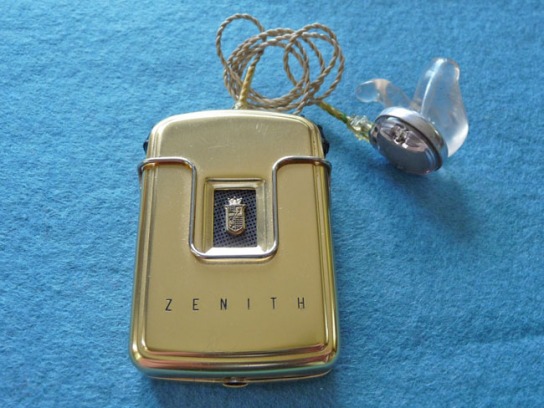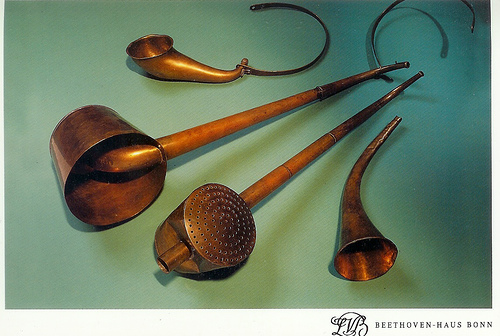From Ear Horns to Bluetooth: A brief history of hearing technology
Any technology buff worth their salt knows about Moore’s Law, which states that the power, size, and cost of technology improves exponentially over time. Hearing aid technology is no exception to this rule.
The first hearing-assistive deveices showed up sometime around the 17th cntury, and were called “ear trumpets”. Because of the stigma that is still associated with hearing loss to this day (that hearing loss is only for “old” people”), ear trumpets were hidden in fans, walking sticks, or were even camouflaged as jewel-encrusted pieces of jewelry.
By the early 1900’s, carbon hearing aids had taken over from hearing trumpets, and were the first electric hearing-assistive devices. With these devices, carbon was used to amplify a slight electric current, but these only provided a slight advantage over hearing trumpets. By depression-era times, vacuum tubes were introduced, and vacuum-tube hearing aids hit the market. The actual hearing unit itself was usually sold as a tabletop model or disguised as a camera box case (and eventually evolved into a body-worn model), but the large size of the batteries meant that the batteries were often housed in a separate unit, which caused these hearing aids to be known as “two piece” hearing aids.

Zenith "Royal M" body-worn transistor hearing aid, introduced May 1954. This only weighed 3oz and featured 3 transistors, as well as separate "tone" and "volume" controls.
As with most other electronic devices that existed at the time, the introduction of transistors (to replace vacuum tubes) allowed the size of hearing devices shrink drastically. In 1953, the first all-transistor hearing aid was introduced. It was worn on the body, and is the type of hearing aid many “boomers” were familiar with while growing up. By the late fifties, technology had already advanced to the point where hearing aids were often concealed in pens, tie clips, or even in the thick-framed eyeglasses that were popular at the time. Advances in transistor technology allowed behind-the-ear hearing aids to be introduced during the 1970’s.
Today’s hearing aids are a reflection of the best of today’s digital technology, and feature powerful computer chips which ensure better sound quality than ever before. Today’s hearing aids also feature wireless connectivity, modern styling and design, and are smaller, more durable, and less conspicuous than ever before.
It is estimated that over 34 million people in America (about 11 percent of the population) currently suffer from hearing loss, and if you aren’t sure if you are included this number or not, then you are long overdue for a visit to your local hearing specialist. In Miami, the most respected hearing specialists are Dr. Joseph K. Duran and his staff at New Generation Hearing Centers. Pay New Generation a visit today, or give them a call at 305-551-7222. You won’t regret it!

Leave a comment